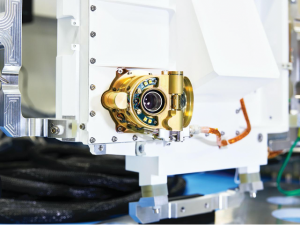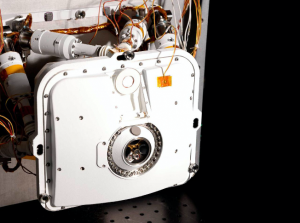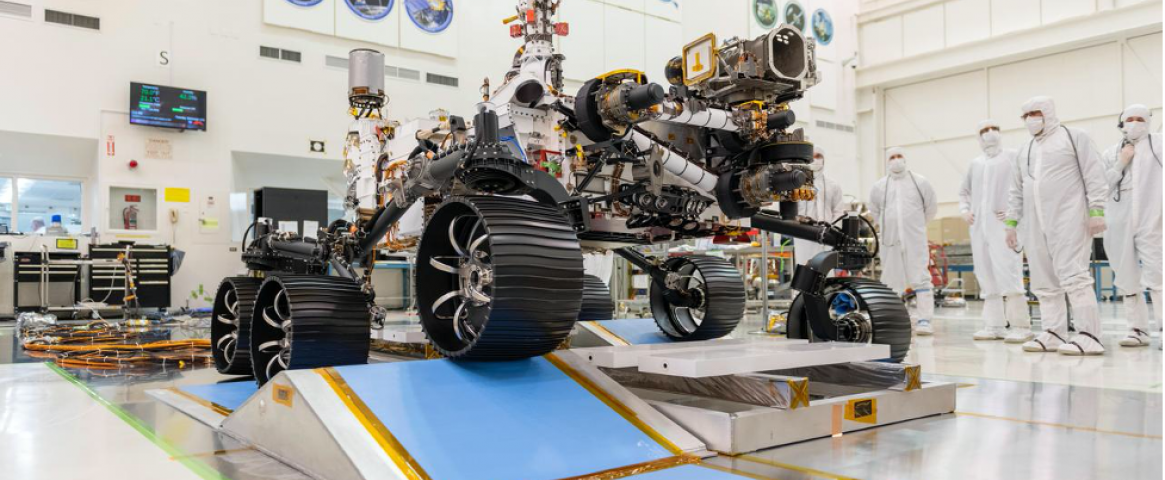By Kennedy Lamb

“I see Perseverance as the first real mobile astrobiologist,” said Lori Glaze, director of NASA’s planetary science division. “It’s a real shot at trying to understand Mars in a new way.” Glaze spoke about the current Mars mission during a Feb. 8 talk at the American Association for the Advancement of Science (AAAS) annual meeting.
That new understanding comes only after years of exploration, Glaze said. Perseverance is the product of decades of NASA research, beginning with Mariner 9’s discovery of the first signs of water on Mars in 1971. That discovery opened the door to new questions—and led to the new tools and technologies required to answer them. “Perseverance builds on the legacy of so many missions who have led the way,” she said.
For example, NASA’s 1997 Pathfinder mission demonstrated the ability to navigate and maneuver on another planet. In 2004, the Spirit and Opportunity missions uncovered signs that Mars was much warmer and wetter in the distant past.
Perseverance’s close cousin, Curiosity, confirmed that bodies of water once existed on the red planet. Without the discoveries made by its predecessors, Glaze said, Perseverance would not be as well equipped to carry out its missions today.
“Perseverance builds not only on the technology of previous missions, but also on the science,” she said.

“Spectrometers are terrific tools to explore not only Mars, but all corners of our solar system,” said Sarah Stewart Johnson, a planetary scientist at Georgetown University. “We can use previous [spectrometer] queries for design protocols when designing the latest version of instruments.”
Another new instrument is SHERLOC—the Scanning Habitable Environment with Raman and Luminescence for Organics and Chemicals. SHERLOC will use cameras, spectrometers, and a laser to search for minerals that have been changed by water.
A color camera—aptly named WATSON—will assist SHERLOC by taking detailed pictures of the planet’s surface texture
And mounted to the front are the rover’s main set of eyes—the Mastcam-Z, a new camera system that will take panoramic and stereo images of the surface of Mars.
While Perseverance’s main objective is to look for signs of ancient life, its other mission is to help NASA prepare for future human exploration.
Strapped to its exterior, SHERLOC also carries samples of astronaut suits, to test how they hold up in the Martian environment. Another instrument, called MOXIE—Mars Oxygen In-Situ Resource Utilization Experiment—will test the feasibility of making oxygen on Mars
Perseverance even brought along a small helicopter. That helicopter, Ingenuity, is the first test of powered flight on another planet.
“This is really an amazing feat, if you think about what is required to fly on Earth,” Glaze said. On Earth, the atmosphere provides lift under the wings of aircraft, she said. But getting that kind of lift on Mars, with its far less dense atmosphere, is much more challenging.
Finally, Mars 2020 promises the return of rock samples from the red planet. A drill attached to the front of the rover will collect samples, which will be stored on Mars until a return mission in 2031.
“The only way to answer the question ‘Are the chemicals and minerals we are finding really indicative of past life,” Glaze said, “is to bring the samples back to Earth, to allow us to make use of all the laboratory capabilities on our own planet.”
Preserving rock samples also allows future generations to study Mars, she said.
“We know that there is incredible value to preserving these samples not just for immediate use, but also for future scientists,” she said. “By saving these samples we allow a space for hypotheses from scientists who may not even be born yet.”
Kennedy Lamb is a science writing graduate student at Johns Hopkins University. She was an editorial intern at UMBC Magazine and a staff writer for The Retriever at the University of Maryland, Baltimore County. Follow her on Twitter @kennedy_lamb_2 or email her at klamb6@jh.edu.
This story was edited by NASW member Jennifer Cutraro, who served as Lamb's mentor during the NASW-AAAS Spring Virtual Mentoring Program.
Hero image: In a clean room at NASA's Jet Propulsion Laboratory in Pasadena, California, engineers observed the first driving test for NASA's Mars 2020 rover on Dec. 17, 2019. (NASA/JPL Caltech.)




